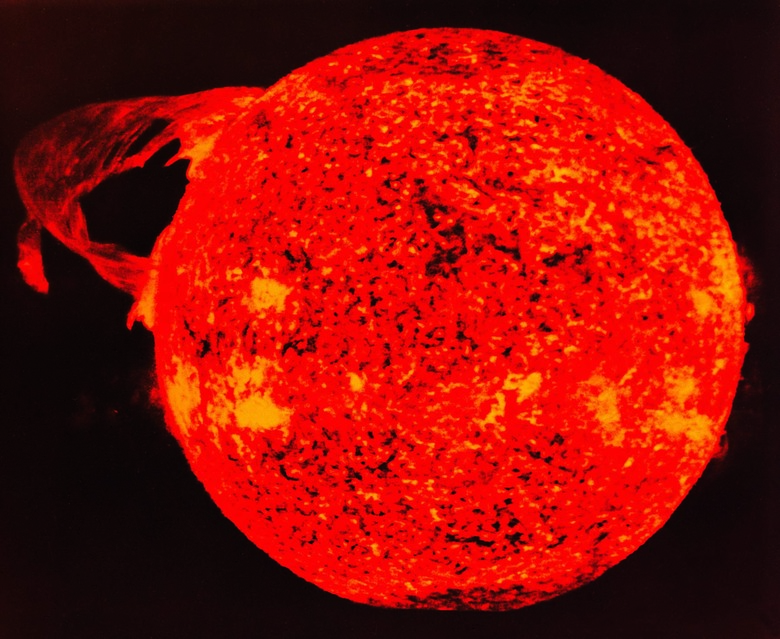What Effects Can Solar Flares Have Directly On The Earth?
Solar flares occur when charged particles in the sun's plasma erupt into space, traveling with enormous speed. These flares can increase the effect of the solar wind, the force of the particles constantly flowing out of the sun through the solar system, or they can cause a coronal mass ejection, a massive burst of charged particles and magnetic fields. If a solar flare strikes Earth, it can cause a number of different effects.
Electrical Disruption
Electrical Disruption
One of the more significant dangers of a solar flare is widespread electrical disruption. When the particles strike the Earth's magnetosphere, they can produce an electrical charge, one strong enough to reach the surface of the planet. When these charged currents encounter electrical grids, they can cause a number of problems. On March 12, 1989, a particularly strong solar flare struck North America, and overwhelmed the electrical grid of the Canadian province of Quebec. At 2:44 the following morning, a series of cascade failures occurred in the electrical system, resulting in a province-wide blackout that lasted 12 hours.
Broadcast Interruption
Broadcast Interruption
Solar flares can also disrupt communication systems. The geomagnetic storms caused by a flare striking Earth produce electrical interference high in the atmosphere, affecting radio and other broadcast communication systems. Depending on the intensity of the flare, this can range from mild static interference to a complete blockage of communications for the duration of the storm. Shortwave communications in particular are vulnerable to disruption, since they take advantage of electrical conditions in the Earth's atmosphere to bounce signals across great distances.
Atmospheric Displays
Atmospheric Displays
Near the poles, the aurora borealis and aurora australis produce vivid, colorful sky shows at night. These effects are the result of excited particles interacting high in the Earth's atmosphere. The additional charged particles from a solar flare can drastically increase the effect of these lights in the sky, extending their range and increasing their intensity. During the March 1989 storm, the aurora borealis, typically restricted to Canada and Alaska, was visible as far south as Florida.
Orbital Dangers
Orbital Dangers
While the Earth's atmosphere provides protection against the radiation from solar flares and mitigates some of their electrical effects, people and objects in orbit have considerably less protection. The International Space Station flies in a low enough orbit that most solar flare effects are somewhat mitigated, but satellites in high geosynchronous orbit may be disrupted by the flares. Modern satellites contain protection against electrical disruption such as built-in Faraday cages, but flares can block signals to and from satellites and in some rare cases shut them down completely. This can lead to communication disruptions on Earth, shutting down international telephone links and television satellite feeds.
References
- NASA Goddard Space Flight Center: What is a Solar Flare?
- NASA Goddard Space Flight Center: Space Weather: What Impact Do Solar Flares Have On Human Activities?
- National Oceanic and Atmospheric Administration: How Space Weather Affects Real-Time Technology
- United Press International: When the Sun Brought Darkness
- Wired: Listen to a Solar Flare Drown out Radio Communications on Earth
Cite This Article
MLA
Kazmeyer, Milton. "What Effects Can Solar Flares Have Directly On The Earth?" sciencing.com, https://www.sciencing.com/effects-can-solar-flares-directly-earth-3864/. 24 April 2017.
APA
Kazmeyer, Milton. (2017, April 24). What Effects Can Solar Flares Have Directly On The Earth?. sciencing.com. Retrieved from https://www.sciencing.com/effects-can-solar-flares-directly-earth-3864/
Chicago
Kazmeyer, Milton. What Effects Can Solar Flares Have Directly On The Earth? last modified March 24, 2022. https://www.sciencing.com/effects-can-solar-flares-directly-earth-3864/
